
Alistair
Travel Expert
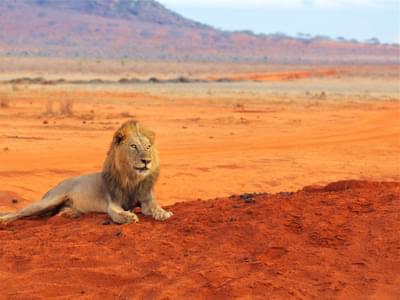
The ‘Big Five’ are a must see for many safari goers and ticking off all five can be a real highlight of any safari holiday.
The Big Five is a term originally coined by colonial hunters who viewed these animals as the hardest and most dangerous animals to kill, although today safaris now focus on spotting, watching and photographing animals, rather than hunting then, the draw of seeing the ‘Big Five’ remains as popular as ever.
The ‘Big Five’ is made up of lion, leopard, elephant, buffalo and rhino. Of these, leopard are often the hardest to see as they tend to be the most elusive and are also the smallest of the ‘Big Five’. There are both black and white rhino and these remain the rarest as a result of poaching for their horns, and black rhino in particular are critically endangered.
Whilst seeing all of the Big Five can never be guaranteed on safari as you are looking for wild animals in their natural habitat and it can be difficult to predict where they will be, you can increase your chances by going to know Big Five areas.
Here are some of our favourite safari holidays and destinations to give you the best chance of seeing the ‘Big Five’.
The Kruger National Park in South Africa is home to an amazing array of wildlife including the Big Five and visitors tend to have high success rates of sightings here. As well as the Big Five, you also have the chance to see cheetah, wild dog, hyena, and giraffe to name a few.
The most elusive of the Big Five is typically leopard which hide in thick, dense bush or up trees and hunt at nights, so leopard fans would do well to also explore Sabi Sands Private Game Reserve which lies adjacent to Kruger National Park and is one of the best places to spot leopard in the whole of Africa.
As well as the dense wildlife, South Africa also tends to offer excellent value for money with high accommodation standards and exceptional food and drink on offer, it is one of the most affordable safari destinations especially if you choose to self-drive.
A Big Five safari in the Kruger can also be combined either with Cape Town and the winelands or with the world-class beaches of either Mozambique or the Seychelles.
Cape Town, Winelands and Kruger -16 days from £4,435pp including international flights.
Luxury Kruger and Mozambique Honeymoon - 11 days from £8,345pp including international flights
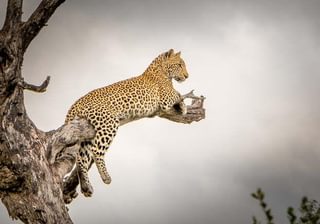
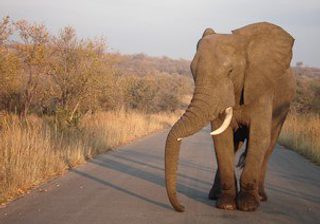
The world-renowned Masai Mara in Kenya is abundant with wildlife and offers a particularly good opportunity to see Big Cats. In August and September, you also have the chance to see the Wildebeest Migration as it moves up from the Serengeti which is an unforgettable experience. A popular luxury add-on to a Masai Mara safari, is a sunrise hot air balloon which gives you a unique perspective of the amazing plains dotted with acacia tress and watch herds of animals moving below.
On a Masai Mara safari you have a strong possibility of seeing lion, leopard, elephant, and buffalo. Whilst rhino can be seen in the Masai Mara, it is less common so to maximize your chances of seeing both white and black rhino, we would recommend combining the Masai Mara with either Lewa or Laikipia which can be reached with a short flight and are both renowned for the number of rhino present and their conservation programs which are fascinating to learn more about.
Combining two safari areas also gives you the chance to see different landscapes within Kenya giving you a greater sense of the country and is easy to achieve within a week’s safari.
Kenya offers a very traditional safari experience with the chance to meet the Masai warriors, enjoy bush breakfasts and sundowner drinks, as well as to spot the Big Five. It also boasts stunning white sand beaches along the Kenya coast, or can easily be combined with Zanzibar or the Seychelles for some post-safari relaxation.
Classic Kenya safari and beach - combine the Masai Mara, Laikipia and Diani Beach in this 10 day holiday from £5,335pp (excluding international flights).
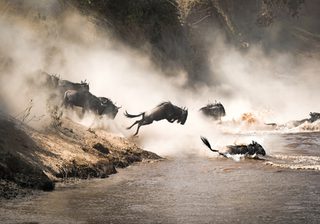
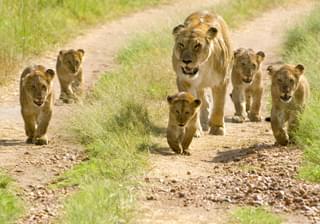
Home to the world-famous Wildebeest Migration across the Serengeti which is often described as the ‘Greatest Show on Earth’ and the vast Ngorongoro Crater, Tanzania offer unbeatable wildlife viewing and a great chance to see the Big Five.
To maximise your chances of seeing the ‘Big Five’ and for a truly special holiday, we’d recommend combining the Serengeti which has plentiful number of buffalo, elephant and lion, and leopard, with the Ngorongoro Crater which has a healthy black rhino population (the rarest of the Big Five).
The Serengeti is a vast, flat savannah for as far as you can see and during the migration you will see hundreds of thousands of wildebeest and zebra on the move to find fresh pastures, and of course, followed by plenty of predators hunting their next meal. The peak times to visit are January and February which is the calving season and July to September when the famous river crossing happen.
By contrast, the Ngorongoro Crater which is a long extinct volcano, has steep high walls giving you an incredible view from the rim and an impressive amount of wildlife on the Crater floor including black rhino.
A Tanzania safari is easy to combine with the pristine beaches of Zanzibar, and many choose to spend a week relaxing and snorkelling on this wonderful island after their safari.
Safari and beach - enjoy the luxury of having your own driver as you combine the Tarangire National Park famed for its elephants, with the Serengeti and Ngorongoro Crater, followed by relaxing on the beach in Zanzibar in this 13 day holiday. From £4,800pp.
Tanzania active safari - for those looking to try a more active holiday, enjoy this mixture of mountain biking, walking and 4x4 safaris visiting Lake Manyara, Ngorongoro Crater and the Serengeti in this 9 day adventure. From £4,167.
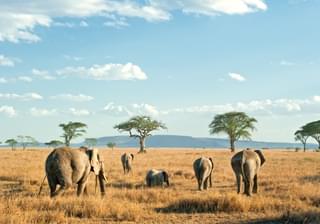

Botswana is often seen as the pinnacle of safari destinations, renowned for its abundant wildlife and exclusive game-viewing. Whilst Botswana is particularly known for its high number of elephant, it is home to all of the Big Five now that rhino have been reintroduced in recent years.
Chobe National Park in Botswana is a heavyweight safari destination with plenty of elephant and predators including lion. There have even been instances here where lions have been witnesses taking down elephant – a rare and incredible feat.
Rhino have recently been reintroduced to Botswana and your chances of seeing these are greatest in Moremi Game Reserve which is at the heart of the Okavango Delta. Moremi is also a great place to spot leopard due to the dense trees, tall grasses and high predator numbers, making it a great place for them to thrive. As well as being home to the Big Five, you can also see cheetah, hyena and rare wild dog.
As well as spotting the Big Five, Botswana gives you a chance to enjoy a safari from a different perspective with the chance to glide silently through the Delta in mokoros (traditional dugout canoes), to track animals on foot or horseback and to get up close to meerkats on the Makgadikgadi salt pans
Botswana and Victoria Falls - combine Chobe National Park with the Okavango Delta and the magnificent Victoria Falls in this 16 day safari from £11,647pp.
Affordable Botswana safari - whilst Botswana is renowned for luxury making it expensive, it can be done exceptionally well on a budget as this trip shows. Combine a stay on the banks of the Gomoti River, with Khwai in the Okavango Delta and Victoria Falls. 10 days from £4,677pp.
Botswana active safari - if you are looking for an active safari and a chance to stretch your legs then this 11 day trip which includes walking safaris, canoes and meerkats, as well as a chance to see the Big Five is for you. From £4,947pp.

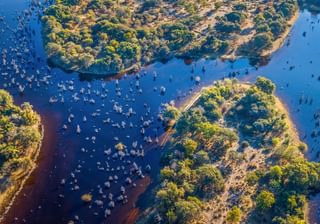
Zimbabwe is blessed with some of Africa’s largest game reserves and within these a chance to see the ‘Big Five’ as well as many other African animals and some incredible bird life.
Whilst historically Zimbabwe has had a problem with poaching, this has been turned around. Rhino protection and conservation has increased greatly after a poaching crisis was announced in 2008, and it now holds the fourth largest population of black rhino in Southern Africa. Matobo, a hidden gem, is home to Zimbabwe’s largest free-roaming population of black and white rhino and well worth a visit to see these magnificent animals.
Hwange National Park is Zimbabwe’s largest park and is also located close to Victoria Falls making it easy to combine with some fantastic waterfall activities. Hwange is home to four of the Big Five, but is particularly known for its large population of elephant. It has a varied vegetation of rich open grasslands and dense forest which ensures a wide variety of wildlife, including over 400 species of bird.
Another renowned option is UNESCO-protected Mana Pools which is where the Zambezi River turns into flood plains and fills lakes during the wet season. In the dry season, animals come to these watering holes to drink so it can be a particularly good opportunity to see predators especially lions.
The best spot for seeing rhino in Zimbabwe is the breathtaking Matobos National Park, where these gentle giants of the bush roam sedately on the open plains which are overlooked by towering granite kopjes and ancient bushman rock art sites.
Victoria Falls and Zimbabwe highlights holiday visits both Hwange National Park and Mana Pools, as well as Lake Kariba and Harare. 15 days from £5,154pp including all flights.
If you are particular keen to see Rhino, then this ‘Best of the West’ combines Victoria Falls and Hwange National Park with Zimbabwe’s hidden gem Matobos. 9 days from £3,125pp including all flights.
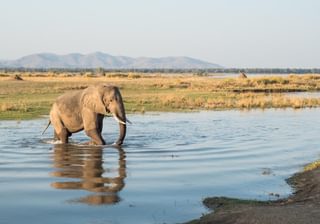
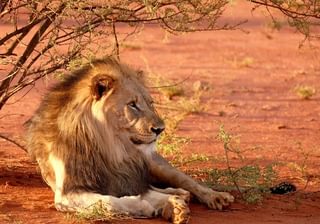
Whilst Namibia is often seen as destination for breath-taking landscapes first and safari as a secondary add on, it holds almost a third of Africa’s black rhino population, as well as elephant, lions, leopards and buffalo to make up the Big Five.
If you are going on safari in Namibia, you will want to head to Etosha national park. In the dry season, lion, elephant and leopard are often seen at the waterholes here and there is the opportunity to see both black and white rhino. The lack of large amounts of permanent water means that buffalo aren’t seen in many of Namibia’s most popular areas such as Etosha, but those searching for the large bovine herds can head to the Caprivi Strip where they can be seen in strong numbers.
Rhino enthusiasts might also want to visit Damaraland to see desert-adapted rhino and even spend time tracking them on foot with rangers from the Save The Rhino Foundation – an amazing experience and one not to be missed.
You might also want to visit Okonjima Game Reserve which is well known for its cheetah and leopard safaris. The AfriCat foundation rehabilitates cheetah, wild dog, hyena and leopard, giving you a unique chance to get up close to these amazing animals.
Most people who visit Namibia will choose to self-drive, allowing themselves to explore the country at their own pace. You can then choose to either self-drive in Etosha or to hire a guide which has the advantage that they will often know where animals are likely to be and can share their expert knowledge with you.
This classic Namibia self-drivewill take you to Etosha, Damaraland and Okonjima for wildlife viewing, as well as to the famous dunes of Sossusvlei and the skeleton coast. 12 nights from £2,945pp including international flights.

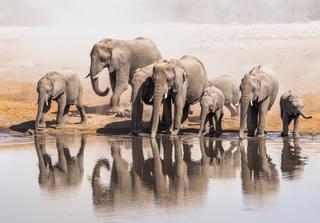
For more tips on planning a safari check out our ultimate safari guide or our top family safari holidays.

Lion (Panthera leo)
Lions are apex predators and commonly live in prides that range from 3 to 20, or occasionally more, individuals. The females, lionesses, are the main hunters, whilst males defend the pride’s territory and females from other rival lions.
FACT – Lions spend a lot of their time resting and are active for as little as 2-6 hours a day!
FOUND – In a wide range of habitats including deserts, grasslands and forests
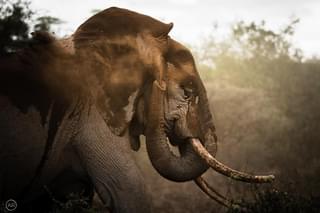
African Elephant (Loxodonta africana)
The largest terrestrial mammal on Earth, elephants are incredibly sociable and live in matriarchal herds, headed by an adult female. They are nomadic animals, moving in search of food and water and can communicate over large distances through subsonic sound.
FACT – Elephant pregnancies last for 22 months - the longest of all mammals.
FOUND - In a wide range of habitats including deserts, grasslands and forests.

Buffalo (Syncerus caffer)
The African buffalo is a large animal that can reach 1.45 metres in height, 2.9 to 3.4 metres in length and males weigh up to about 800 Kg. They are a very protective species and will often aggressively defend members of the herd from predators.
FACT – Adult males can be recognised by heavier horns that join across the head in a large boss.
FOUND – In grassland areas with access to water and ideally shade.
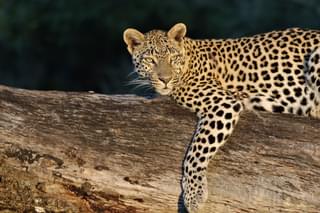
Leopard (Panthera pardus)
Leopards are solitary and territorial predators. Most active at night, they use their remarkable camouflage and stealth to stalk their prey. Kills are often stored for days and taken up trees when there are many scavengers around.
FACT - The leopard has a rasping call that sounds like a plank of wood being cut by a coarse saw.
FOUND – Very adaptable; usually rocky terrain or forests, with good cover for shelter and hunting.

Black Rhinoceros (Diceros bicornis)
A critically endangered and quite shy species. Adults weigh between 800-1400kg, black rhinos are browsers, eating leaves from short trees, using their hooked lip. They are smaller than white rhinos, with shorter heads, rounder ears and their two horns are more similar in length.
FACT – Black rhino dung can be identified by plant material that is neatly snipped at a 45o angle.
FOUND – Prefers woodland or dense undergrowth near permanent water, but also occurs in arid areas.

White Rhinoceros (Ceratotherium simum)
White rhinos are near threatened, with just over 10,000 individuals remaining in 2020. Their name does not come from their colour, but likely the Afrikaans word ‘Weit’, meaning wide, which describes their broad muzzle, designed for grazing grasses. Adults commonly weigh between 1,800-2,500kg.
FACT – A group of rhinos is called a Crash.
FOUND - In open grasslands with a nearby water source and some thick cover.
If you’d like to arrange a ‘Big Five’ safari, then give our safari experts a call today on 01768 305715 or fill in our enquiry form. Every holiday we make it tailored to your requirements and created from scratch so we can create the perfect safari for you, or for more inspiration, take a look at our 26 best safari holiday ideas.

Travel Expert